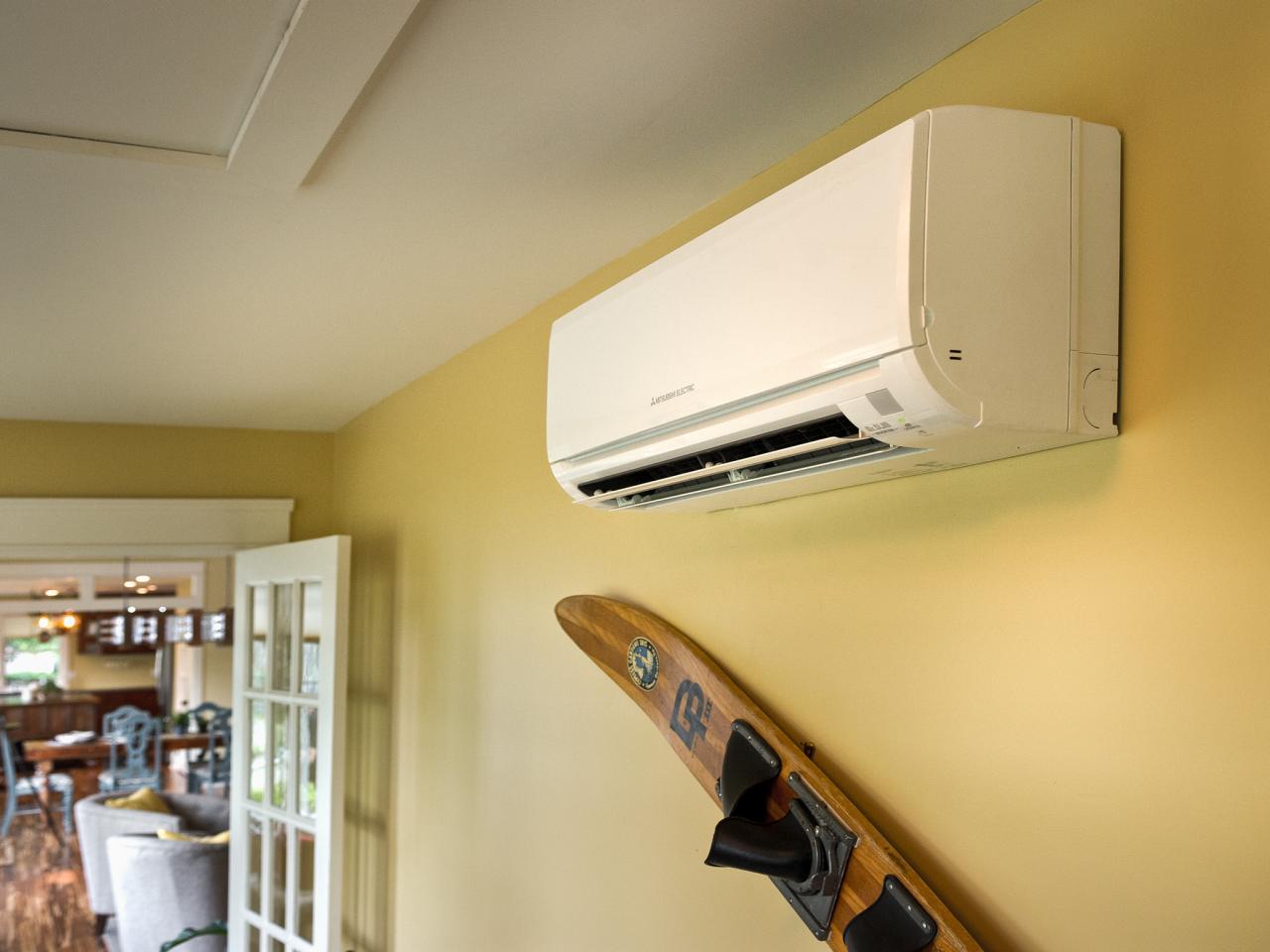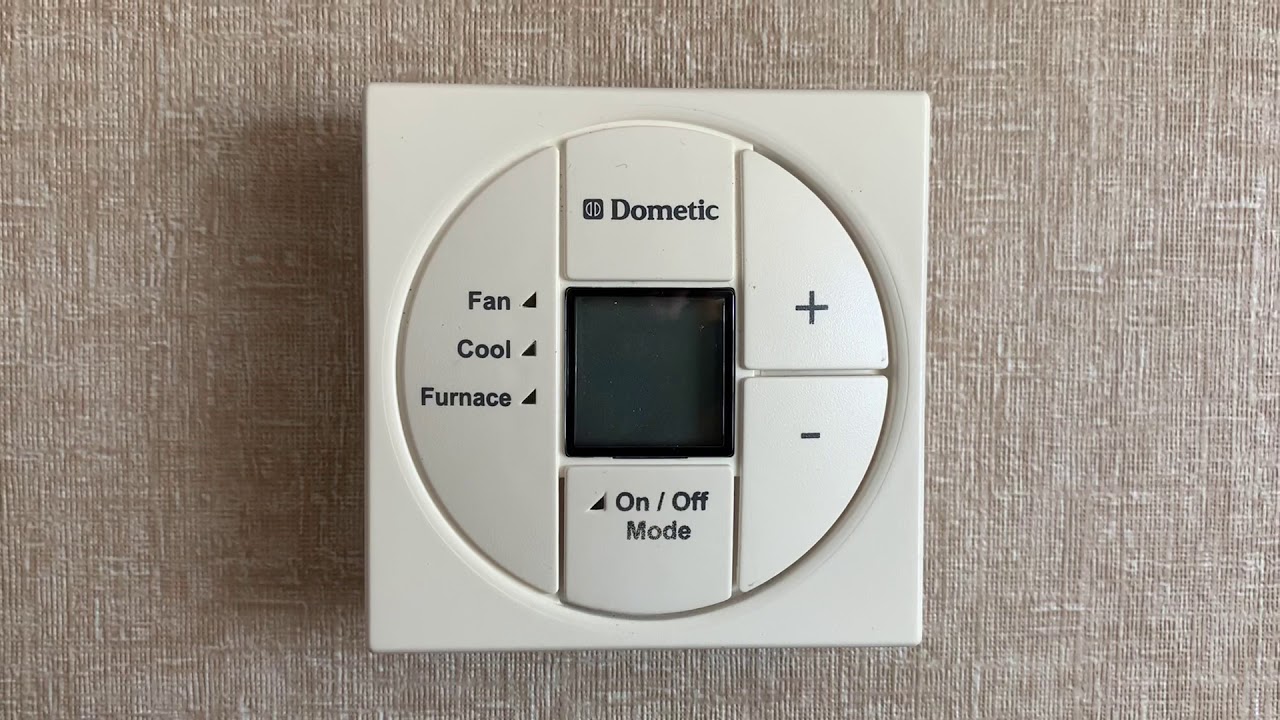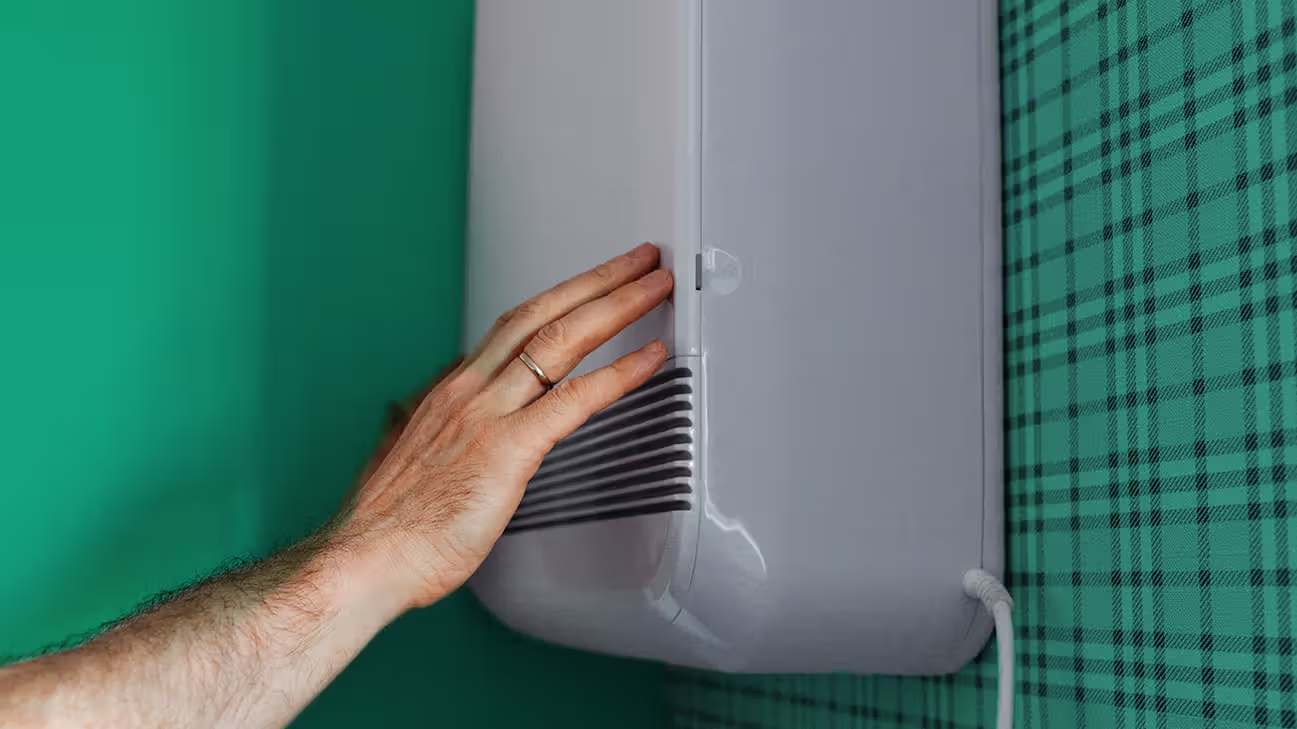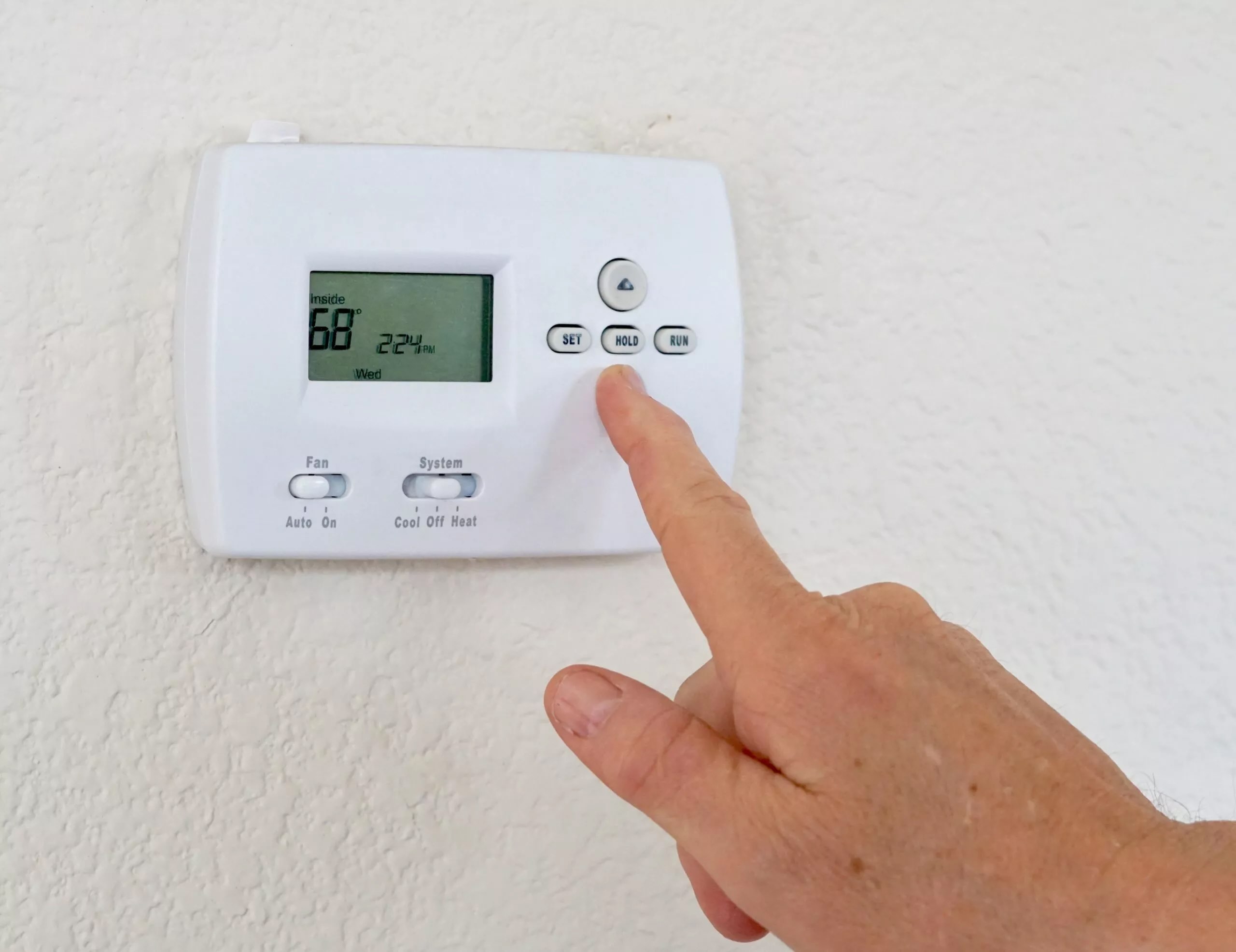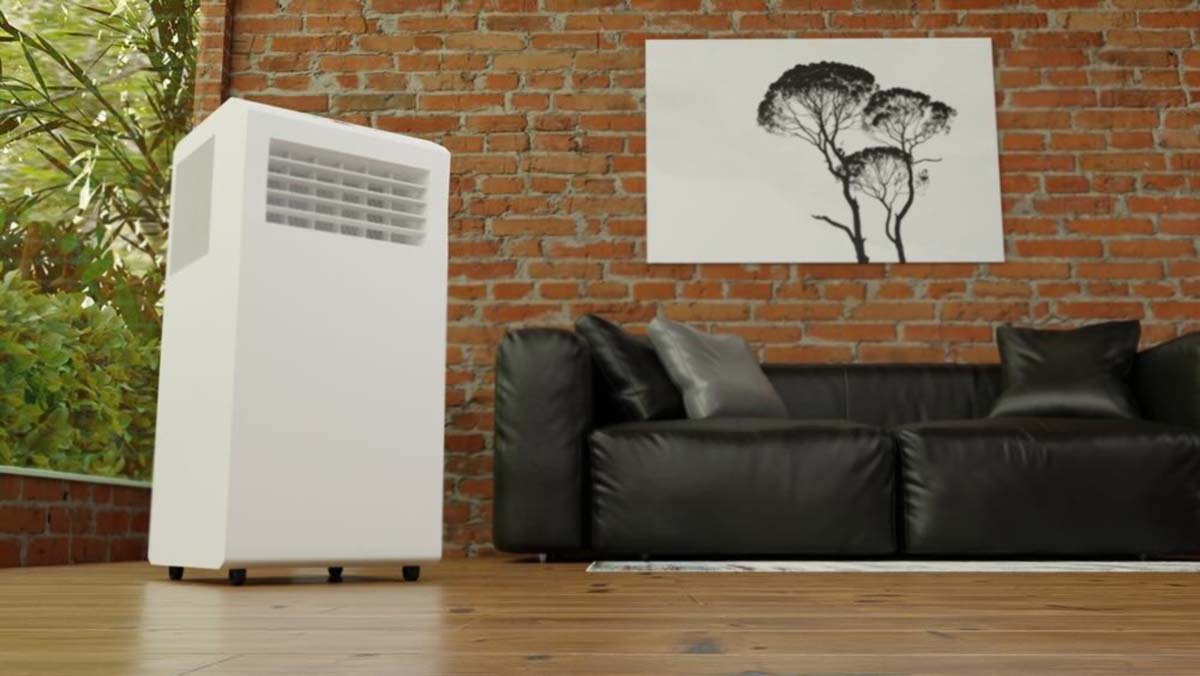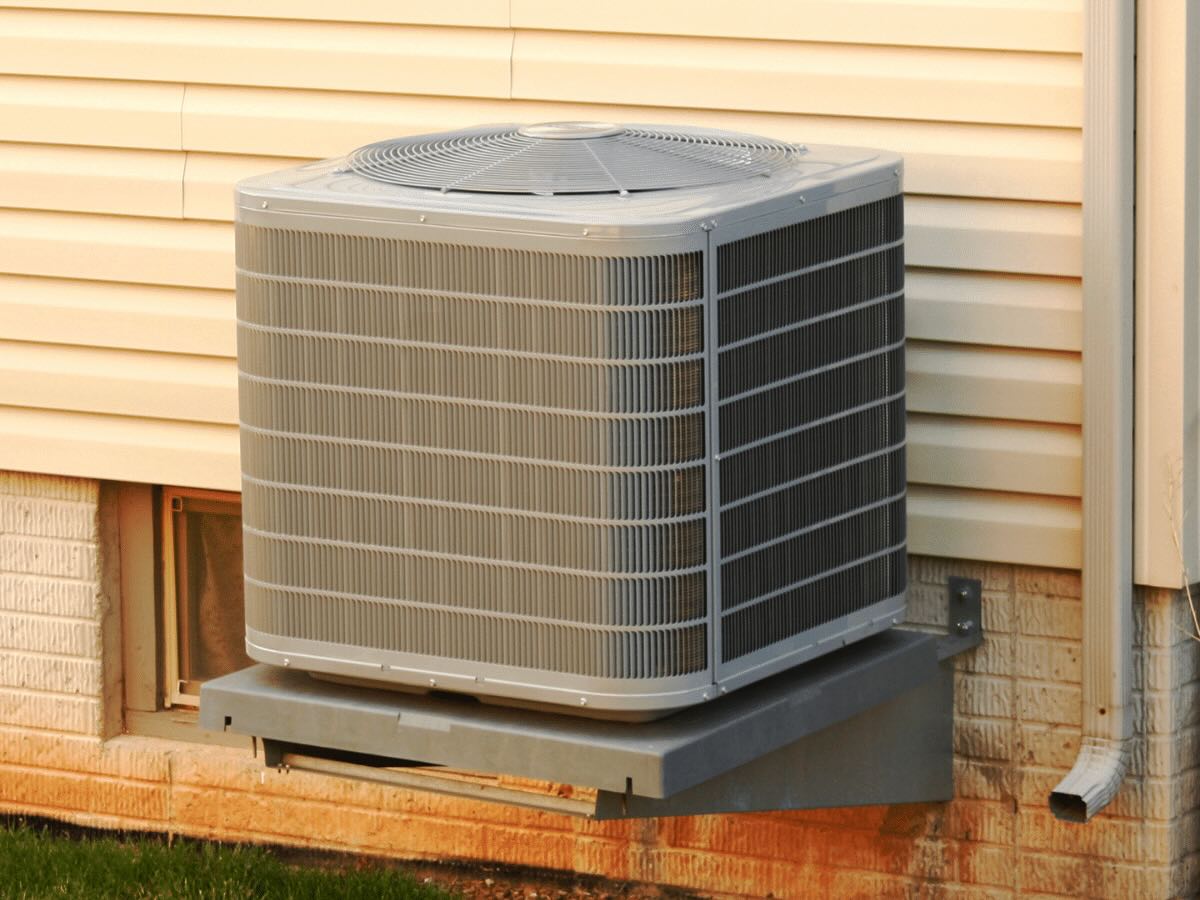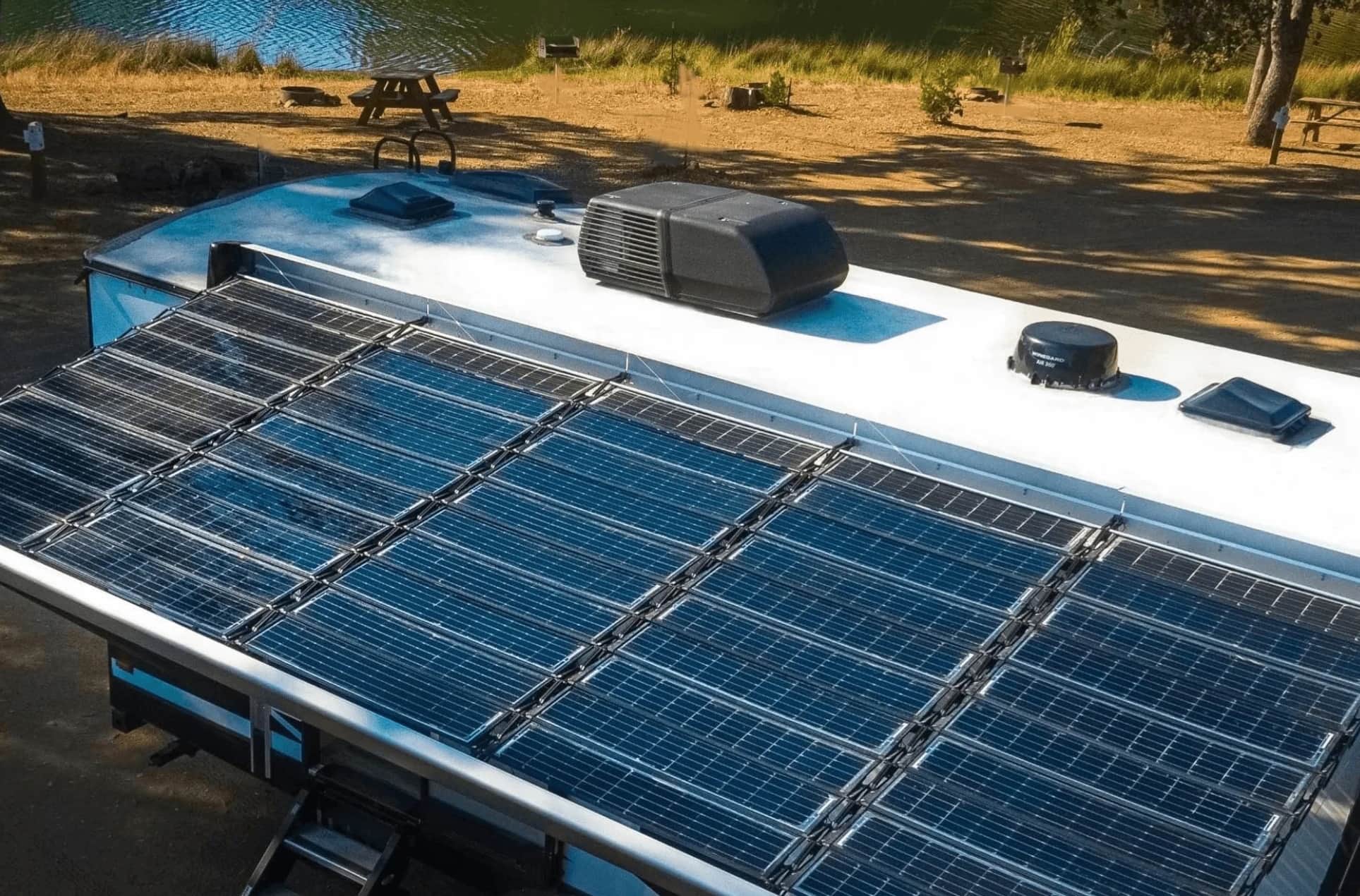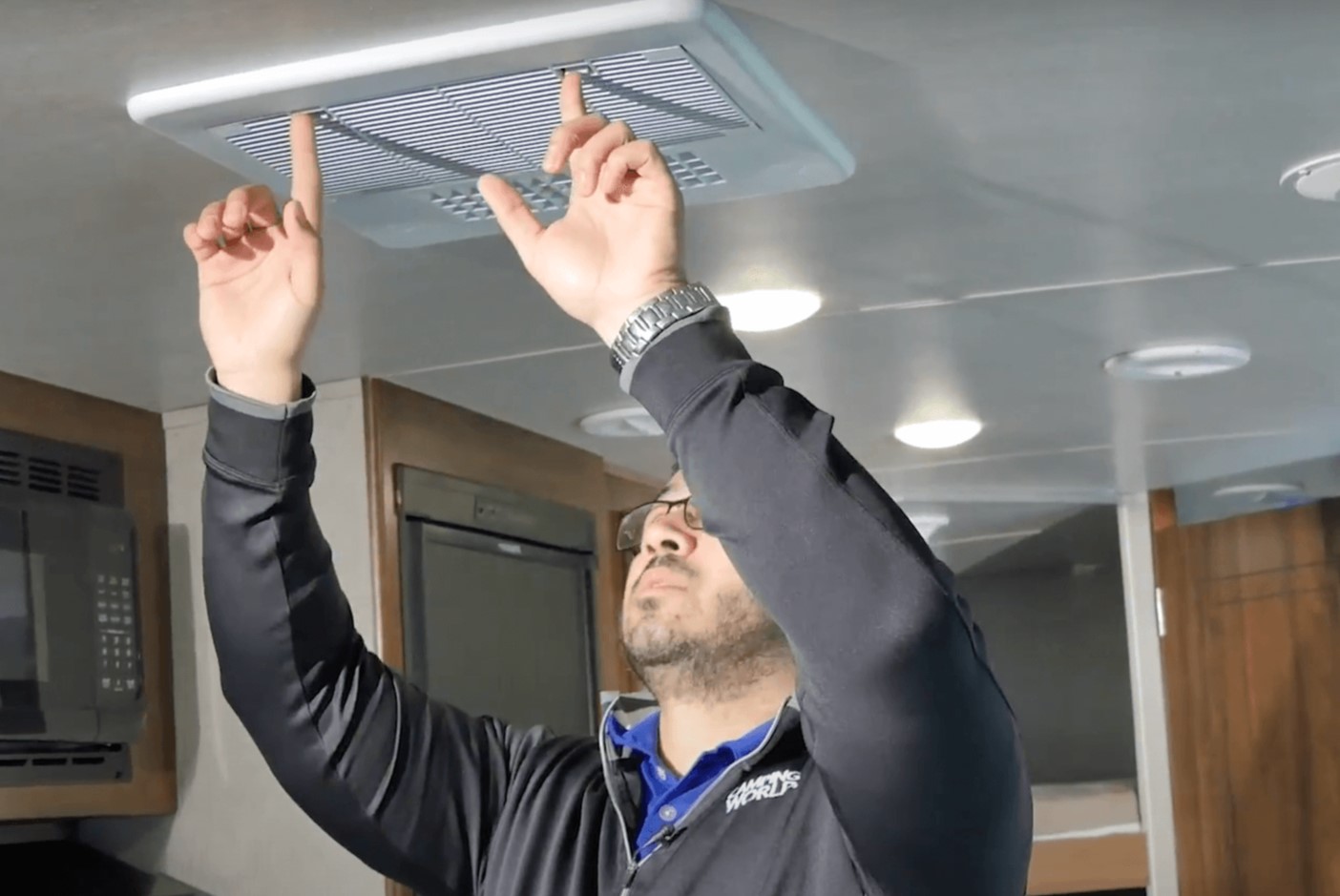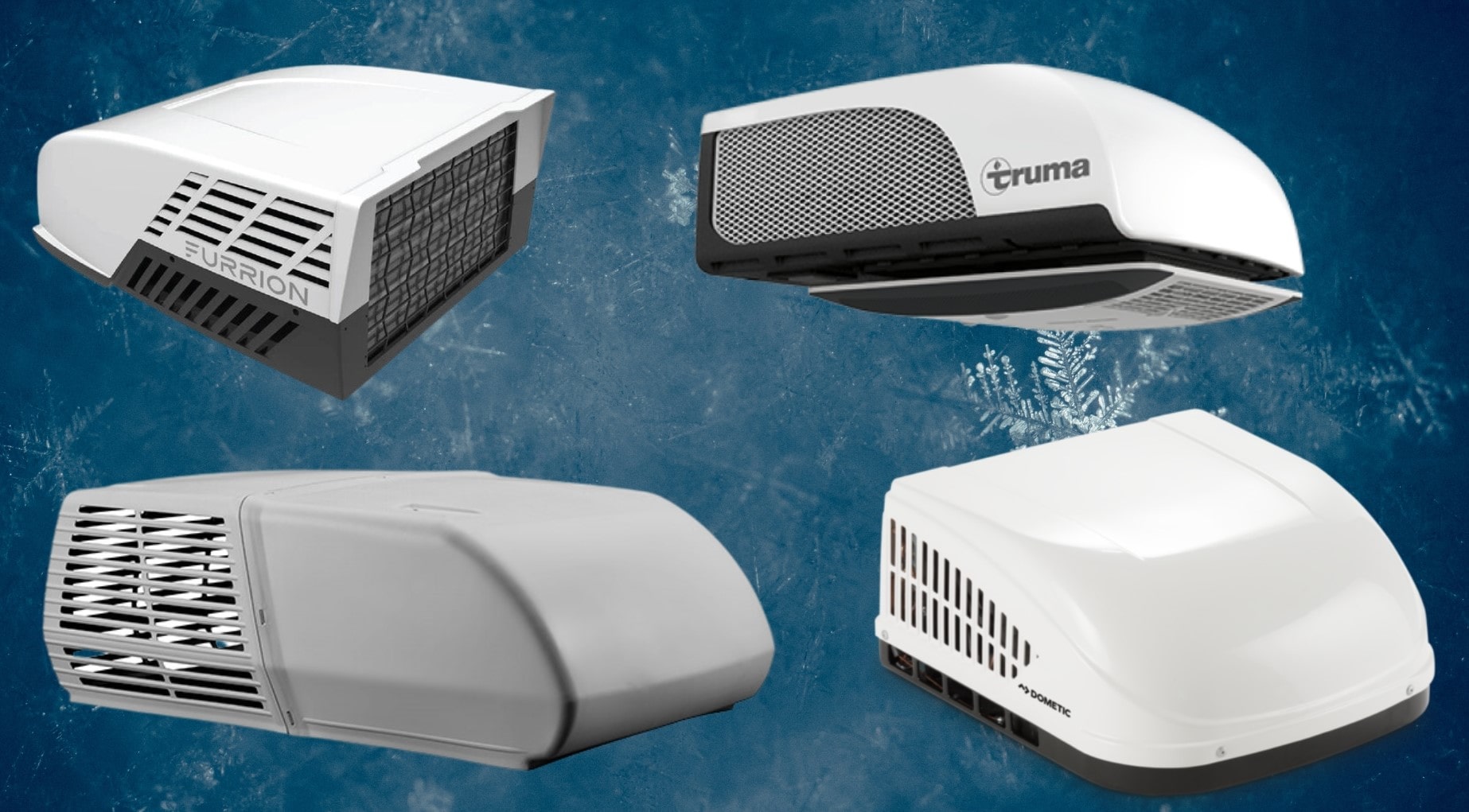Home>Home Maintenance>How Does A Dometic RV Air Conditioner Work
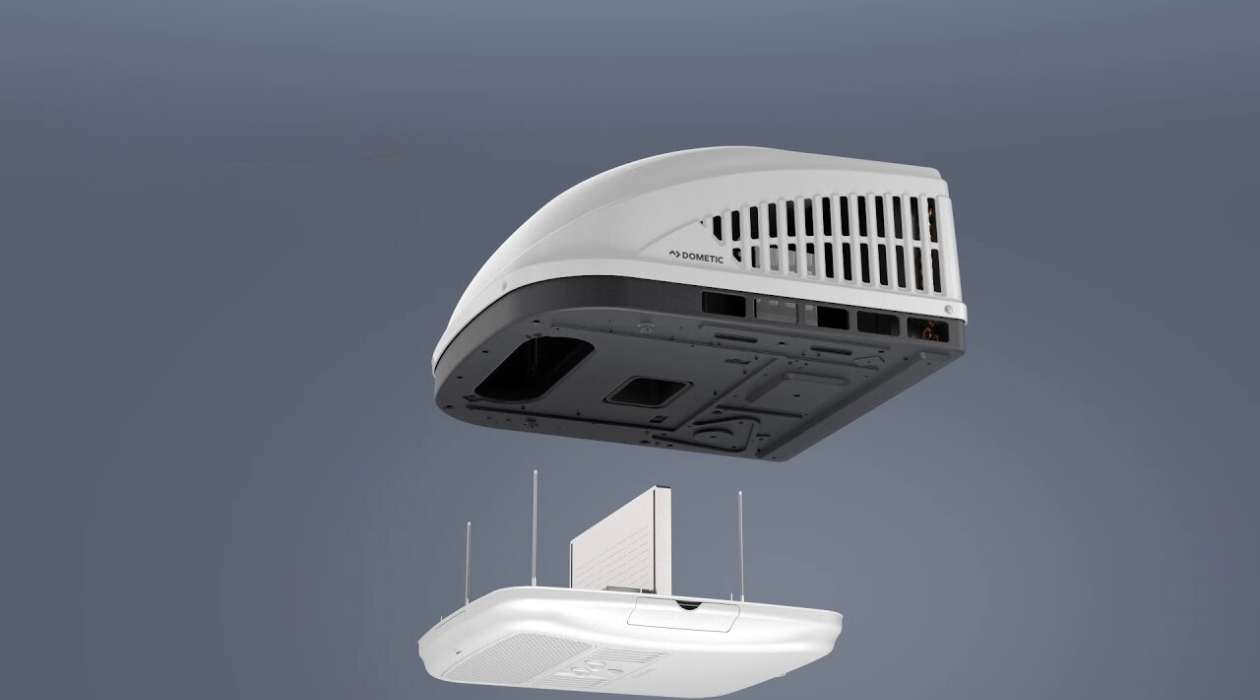

Home Maintenance
How Does A Dometic RV Air Conditioner Work
Modified: March 7, 2024
Learn how a Dometic RV air conditioner, an essential component of home maintenance, works to keep your living space cool and comfortable.
(Many of the links in this article redirect to a specific reviewed product. Your purchase of these products through affiliate links helps to generate commission for Storables.com, at no extra cost. Learn more)
Introduction
Welcome to the world of Dometic RV air conditioners! If you’re a proud owner of an RV, you know that keeping your home away from home cool and comfortable is essential for an enjoyable journey. Dometic RV air conditioners are designed specifically for recreational vehicles, providing efficient cooling and temperature control in even the harshest outdoor conditions.
In this article, we will take you through everything you need to know about Dometic RV air conditioners – from how they work to their energy efficiency and maintenance tips. So, let’s dive in and explore the incredible features and benefits of using a Dometic RV air conditioner.
Key Takeaways:
- Dometic RV air conditioners keep your RV cool and comfy by using a thermostat to control temperature, filtering air for freshness, and removing moisture for a pleasant environment.
- To maintain your Dometic RV air conditioner, clean it regularly, replace the filter, and have it serviced annually. Troubleshoot common issues like insufficient cooling and strange noises for optimal performance.
Read more: How To Reset A Dometic RV Air Conditioner
Overview of Dometic RV Air Conditioners
Dometic offers a range of air conditioners specifically designed for use in recreational vehicles. These air conditioners are built to withstand the unique challenges of RV travel, such as high temperatures, fluctuating power sources, and limited space. Let’s explore the different types of Dometic RV air conditioners, the main components that make them function, and the benefits of using them in your RV.
Types of Dometic RV Air Conditioners
Dometic offers two main types of RV air conditioners: rooftop units and portable units.
- Rooftop Units: These air conditioners are mounted on the roof of the RV, conserving valuable interior space. They are available in various sizes and cooling capacities to suit different RV sizes.
- Portable Units: As the name suggests, these air conditioners are portable and can be moved around within the RV. They are self-contained units that do not require any installation, making them a versatile option for RV owners.
Main Components of Dometic RV Air Conditioners
Dometic RV air conditioners consist of several key components that work together to provide efficient cooling and climate control:
- Compressor: The compressor is responsible for compressing the refrigerant, which then circulates throughout the system to extract heat from the indoor air.
- Evaporator Coil: This coil is located inside the RV and absorbs heat, allowing the cooled air to be circulated back into the living space.
- Condenser Coil: The condenser coil releases the heat absorbed from the indoor air to the outside environment, completing the cooling cycle.
- Blower Fan: The blower fan blows the cooled air into the RV, ensuring even distribution throughout the space.
- Thermostat: The thermostat regulates the temperature by sensing the current indoor temperature and signaling the air conditioner to cool or maintain the desired temperature.
Benefits of Using Dometic RV Air Conditioners
Using a Dometic RV air conditioner offers several advantages for RV owners:
- Efficient Cooling: Dometic air conditioners are designed to provide efficient cooling even in hot and humid conditions, ensuring a comfortable living environment inside the RV.
- Temperature Control: With the thermostat control feature, you can easily set and maintain your desired temperature levels, allowing you to create the perfect climate wherever you travel.
- Durability: Dometic air conditioners are built to withstand the rigors of RV travel, ensuring reliable performance and longevity.
- Quiet Operation: Dometic air conditioners are engineered to operate quietly, allowing you to enjoy a peaceful and relaxing atmosphere in your RV.
- Space-Saving Design: Rooftop units save valuable interior space, allowing you to maximize the living area inside your RV.
Now that you have an understanding of the different types of Dometic RV air conditioners, their main components, and the benefits they offer, let’s delve into how these air conditioners actually work in cooling your RV effectively.
Read more: How To Clean A Dometic RV Air Conditioner
How Does a Dometic RV Air Conditioner Work?
Understanding how a Dometic RV air conditioner works can help you make the most of its features and ensure optimal cooling performance. Let’s explore the key elements of its operation:
Thermostat Control
The thermostat is a crucial component of a Dometic RV air conditioner. It allows you to set and maintain your desired temperature. When the indoor temperature rises above the set point, the thermostat sends a signal to the air conditioner to start cooling. Once the desired temperature is reached, the air conditioner cycles off until the temperature rises again.
Air Intake and Filtration
A Dometic RV air conditioner utilizes an intake system to draw in outdoor air. Before entering the unit, the air passes through a filtration system. This filter captures dust, pollen, and other airborne particles, ensuring cleaner and healthier air inside your RV. Regular filter cleaning or replacement is essential to maintain optimal airflow and efficiency.
Cooling Process
The cooling process of a Dometic RV air conditioner is similar to that of a typical air conditioning system:
- Refrigerant Circulation: The air conditioner’s compressor compresses the refrigerant, which then turns into a high-pressure, high-temperature gas.
- Heat Exchange: The refrigerant flows to the condenser coil, where it releases heat to the outside environment and becomes a high-pressure liquid.
- Expansion Valve: The high-pressure liquid refrigerant passes through the expansion valve, which reduces its pressure and creates a cooling effect.
- Evaporator Coil: The low-pressure, cool refrigerant flows through the evaporator coil, where it absorbs heat from the indoor air.
- Blower Fan: The blower fan circulates the cooled air over the evaporator coil and blows it back into the RV, lowering the temperature.
Read more: How Does An RV Air Conditioner Work
Moisture Removal
As the air passes through the evaporator coil, the cool surface causes moisture in the air to condense. This condensation drips into a drain pan and is directed outside the RV, removing excess humidity from the indoor environment.
Air Distribution
Dometic RV air conditioners are designed to distribute cool air evenly throughout the RV. The blower fan blows the conditioned air into the ductwork, which channels the air to different parts of the vehicle. Adjustable vents allow you to direct the airflow where it is needed most, ensuring all areas of the RV are cooled effectively.
By understanding how a Dometic RV air conditioner works, you can make adjustments to maximize its efficiency and performance. Now, let’s explore the energy efficiency of these air conditioners and how they can help reduce your power consumption while on the road.
Energy Efficiency of Dometic RV Air Conditioners
When it comes to RV travel, energy efficiency is a crucial factor. Dometic RV air conditioners are designed with energy-saving features to help you optimize power consumption and minimize your environmental impact. Let’s explore the energy efficiency aspects of Dometic RV air conditioners.
Power Consumption
The power consumption of a Dometic RV air conditioner can vary depending on factors such as the model, size, and cooling capacity. It is essential to choose an air conditioner that matches the size and needs of your RV to avoid excessive power usage.
Knowing the power consumption of your air conditioner can also help you plan your power usage more efficiently. It is especially important when using onboard generators or connecting to shore power with limited capacity.
Read more: Why Is My RV Air Conditioner Not Working
Energy-Saving Features
Dometic RV air conditioners are equipped with various energy-saving features to enhance efficiency and reduce power consumption:
- Thermostat Control: The thermostat allows you to set your desired temperature, ensuring that the air conditioner operates only when necessary. This helps save energy by avoiding unnecessary cooling.
- Smart Technology: Some Dometic RV air conditioners come with smart technology that can automatically adjust the cooling settings based on ambient conditions. This ensures efficient cooling while minimizing energy usage.
- Programmable Timers: Dometic air conditioners with programmable timers allow you to schedule when the unit turns on and off. This enables you to cool your RV in advance before returning, saving energy by not running the air conditioner unnecessarily.
- Variable Speed Fans: Certain models of Dometic RV air conditioners feature variable speed fans. These fans adjust their speed based on cooling requirements, providing efficient cooling without consuming excessive energy.
- Energy Star Certification: Dometic offers Energy Star-certified air conditioners that meet strict energy efficiency guidelines. Choosing an Energy Star-certified model ensures that you are selecting an air conditioner that is designed to save energy and reduce operating costs.
By taking advantage of these energy-saving features and implementing good energy management practices, you can reduce your power consumption while still enjoying the benefits of a cool and comfortable RV.
Now that we’ve covered the energy efficiency aspects of Dometic RV air conditioners, let’s move on to essential maintenance tips that will help ensure the optimal performance and longevity of your unit.
Maintenance Tips for Dometic RV Air Conditioners
Proper maintenance is key to keeping your Dometic RV air conditioner in top condition and ensuring efficient cooling performance. Here are some essential maintenance tips to follow:
Regular Cleaning
Regularly clean the exterior of your Dometic RV air conditioner to remove dirt, dust, and debris. Use a gentle soap and water solution, and avoid using harsh chemicals or abrasive cleaners that may damage the unit. Be sure to rinse thoroughly and allow the unit to dry completely before operating it again.
Filter Replacement
The air filter in your Dometic RV air conditioner plays a vital role in maintaining clean and healthy air quality. Depending on usage and environmental conditions, the filter may need to be replaced every few months. Check the manufacturer’s recommendations for your specific model, and inspect the filter regularly to ensure it is clean and free from debris. A clogged or dirty filter can restrict airflow and reduce cooling efficiency.
Read more: How Does A Rv Toilet Work
Checking for Damage
Periodically inspect your Dometic RV air conditioner for any signs of damage or wear. Check the condenser and evaporator coils for any bent fins, which can obstruct airflow. Inspect the fan blades for any cracks or damage. Also, check the seals and gaskets for signs of deterioration and ensure they are properly sealing the unit to prevent air leaks.
Professional Servicing
While you can perform basic maintenance tasks, it is also recommended to have your Dometic RV air conditioner professionally serviced at least once a year. A trained technician can inspect and clean the internal components, check refrigerant levels, and address any potential issues. Regular professional servicing can help identify and prevent problems before they become major, ensuring optimal performance and extending the lifespan of your air conditioner.
By following these maintenance tips, you can keep your Dometic RV air conditioner running smoothly and efficiently throughout your travels. However, even with proper maintenance, issues may occasionally arise. Let’s explore some common problems you may encounter with your Dometic RV air conditioner and how to troubleshoot them.
Troubleshooting Common Issues with Dometic RV Air Conditioners
While Dometic RV air conditioners are known for their reliability, occasional issues may arise. Here are some common problems you may encounter with your Dometic RV air conditioner and troubleshooting steps to resolve them:
Insufficient Cooling
If you’re experiencing insufficient cooling from your Dometic RV air conditioner, try the following troubleshooting steps:
- Check the thermostat settings to ensure it is set to the desired temperature and cooling mode.
- Inspect and clean the air filter. A dirty or clogged filter can restrict airflow and reduce cooling performance.
- Check for any obstructions around the air vents or return air grille, ensuring that they are not blocked by furniture or other objects.
- Make sure there are no leaks or gaps in the ductwork, as air leakage can result in reduced cooling efficiency.
- Consider checking the insulation of your RV, as poor insulation can contribute to difficulty in maintaining desired temperatures.
Read more: How Does An Air Conditioner Work?
Airflow Problems
If you’re experiencing issues with airflow from your Dometic RV air conditioner, try the following troubleshooting steps:
- Inspect and clean the condenser and evaporator coils. Accumulated dirt and debris can restrict airflow. Use a soft brush or compressed air to gently clean the coils.
- Check the fan blades for any obstructions or debris and ensure they are not damaged. Clean or replace the fan blades if necessary.
- Verify that all air vents and registers inside the RV are open and unrestricted.
- Check for any obstructions in the ductwork, such as collapsed or blocked sections. Rectify any issues to ensure proper airflow.
- Consider adjusting the fan speed settings, as a higher fan speed can enhance airflow.
Strange Noises
If you’re hearing unusual sounds coming from your Dometic RV air conditioner, try the following troubleshooting steps:
- Check for loose or damaged components, such as fan blades, screws, or mounting brackets. Tighten or repair as needed.
- Inspect the fan motor for any signs of wear or damage. If necessary, lubricate the motor bearings or replace the motor.
- Clear any debris or obstructions that might be causing the noise, such as branches or leaves near the unit or ductwork.
- If the noise persists, contact a professional technician for further inspection and repair.
Leaks or Condensation
If you notice leaks or excessive condensation from your Dometic RV air conditioner, try the following troubleshooting steps:
- Check for any clogged or blocked drain channels or pans. Clear any debris or obstructions to allow proper drainage.
- Ensure the condensate drain line is properly connected and not clogged. Clean or unclog the drain line if necessary.
- Inspect the seals and gaskets around the unit to ensure they are properly sealed. If damaged or worn, replace them to prevent air leaks and condensation buildup.
- If the problem persists or if you notice any refrigerant leaks, it is recommended to contact a professional technician for further assessment and repair.
By following these troubleshooting tips, you can resolve common issues with your Dometic RV air conditioner and restore optimal cooling performance. If the problem persists or if you are unsure about performing any troubleshooting tasks, consider seeking professional assistance to ensure proper diagnosis and resolution.
Now that you’re equipped with maintenance and troubleshooting knowledge, you can keep your Dometic RV air conditioner running smoothly and enjoy comfortable temperatures during your RV adventures.
Conclusion
Having a Dometic RV air conditioner in your recreational vehicle can greatly enhance your camping experience by providing efficient cooling and temperature control. With a range of options available, including rooftop and portable units, Dometic offers reliable and versatile air conditioning solutions for RV owners.
Understanding how your Dometic RV air conditioner works and implementing proper maintenance practices will ensure optimal performance and longevity. Regular cleaning, filter replacement, and professional servicing are essential to keep your unit in top condition.
When troubleshooting common issues such as insufficient cooling, airflow problems, strange noises, or leaks, it’s important to follow the recommended troubleshooting steps carefully. In some cases, professional assistance may be required to address the problem effectively.
Energy efficiency is also a key consideration when it comes to Dometic RV air conditioners. By utilizing energy-saving features, such as thermostat control, programmable timers, and variable speed fans, you can reduce power consumption and minimize your environmental impact without compromising on comfort.
Whether you’re embarking on a weekend getaway or embarking on an epic cross-country adventure, your Dometic RV air conditioner will help keep you cool and comfortable throughout your travels. So, don’t forget to take care of your air conditioner, troubleshoot any issues that arise, and enjoy the benefits of a perfectly climate-controlled RV.
With proper maintenance, troubleshooting skills, and a little bit of care, your Dometic RV air conditioner will continue to provide efficient cooling for many memorable journeys to come.
Frequently Asked Questions about How Does A Dometic RV Air Conditioner Work
Was this page helpful?
At Storables.com, we guarantee accurate and reliable information. Our content, validated by Expert Board Contributors, is crafted following stringent Editorial Policies. We're committed to providing you with well-researched, expert-backed insights for all your informational needs.
